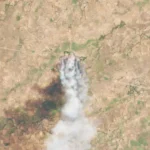
ASEAN’s Role in Myanmar’s Political Crisis: Diplomacy at a Crossroads
Since the military coup in Myanmar on February 1, 2021, the Association of Southeast Asian Nations (ASEAN) has found itself navigating one of the most complex political crises in its history. As Myanmar descends deeper into armed conflict and humanitarian catastrophe, ASEAN’s role has become a focal point of regional and global debate. Can the bloc mediate effectively, or is it constrained by its own foundational principles?
🇲🇲 Myanmar’s Coup: A Brief Recap
On the morning of the coup, Myanmar’s military, known as the Tatmadaw, detained elected leaders including Aung San Suu Kyi, citing unproven allegations of election fraud. The military’s takeover abruptly ended a decade of democratic reforms and triggered massive protests, civil disobedience, and ultimately an armed resistance.
More than 4,800 civilians have been killed and millions displaced, according to reports from ACLED and UNHCR.
🛑 ASEAN’s Five-Point Consensus: Symbol or Solution?
In response to the escalating violence, ASEAN convened a special summit in April 2021 and introduced the Five-Point Consensus, calling for:
Immediate cessation of violence.
Constructive dialogue among all parties.
Mediation by an ASEAN special envoy.
Provision of humanitarian aid.
A visit to Myanmar by the special envoy.
👉 Read the official Five-Point Consensus
However, implementation has been minimal. Myanmar’s junta ignored these terms and continued its crackdown. Critics argue that ASEAN’s reliance on consensus and diplomacy has turned the consensus into a symbolic gesture rather than a real policy tool.
⚖️ ASEAN’s Challenges in Myanmar
1. Non-Interference Doctrine
ASEAN has long upheld a non-interference policy, making it reluctant to take punitive or coercive measures against its own members—even in cases of gross human rights violations.
2. Divided Member States
While countries like Indonesia, Malaysia, and the Philippines have pushed for stronger action, others like Thailand, Cambodia, and Laos have remained more passive or junta-aligned. This division hampers a unified regional stance.
3. Lack of Enforcement Mechanisms
ASEAN lacks tools such as sanctions or military deterrence. Its influence is limited to diplomatic pressure, which has proven ineffective with a regime as entrenched as Myanmar’s military junta.
🔄 Recent Shifts in ASEAN’s Approach
Despite early inaction, ASEAN has begun to take firmer steps:
Junta leaders have been excluded from key ASEAN summits (source).
The bloc appointed special envoys, including Dr. Noeleen Heyzer, to facilitate dialogue.
Humanitarian aid delivery has been coordinated through the ASEAN Coordinating Centre for Humanitarian Assistance (AHA Centre).
Still, civil society groups and the pro-democracy National Unity Government (NUG) argue that ASEAN has not gone far enough in legitimizing inclusive dialogue or applying real pressure.
🔍 What Could ASEAN Do Differently?
For ASEAN to remain credible and effective, experts suggest the following steps:
Revise the non-interference principle to allow responses to extreme humanitarian crises.
Formally engage the NUG and ethnic organizations as legitimate stakeholders.
Work with international bodies like the United Nations, EU, and US State Department for coordinated pressure.
Empower the rotating ASEAN Chair to act more decisively without needing full consensus.
🧭 Conclusion: A Test of ASEAN’s Relevance
ASEAN’s handling of the Myanmar crisis is a litmus test for its relevance as a regional bloc. While some progress has been made, much of it has been symbolic or sidelined by the junta’s refusal to cooperate. The crisis continues to destabilize the region and inflict suffering on millions of civilians.
If ASEAN fails to take stronger action, it risks being seen not as a peace broker—but as a passive bystander.
📚 Further Reading:
Thank you for reading! Visit us anytime at Myanmar.com for more insights and updates about Myanmar
Related posts:
 Inle Lake Buddhist Festival in Myanmar | Tradition & Renewal
Inle Lake Buddhist Festival in Myanmar | Tradition & Renewal
 Thailand Extradites Shwe Kokko Tycoon She Zhijiang to China
Thailand Extradites Shwe Kokko Tycoon She Zhijiang to China
 Myanmar Military Paraglider Strike Kills Dozens
Myanmar Military Paraglider Strike Kills Dozens
 ASEAN Rejects Myanmar’s Military Elections, Illegitimate
ASEAN Rejects Myanmar’s Military Elections, Illegitimate
 UN: Over 400 Rohingya Feared Dead in Two Shipwrecks Off Myanmar Coast
UN: Over 400 Rohingya Feared Dead in Two Shipwrecks Off Myanmar Coast
 U.S. Identifies Myanmar and Other Nations in Annual Drug Report
U.S. Identifies Myanmar and Other Nations in Annual Drug Report
